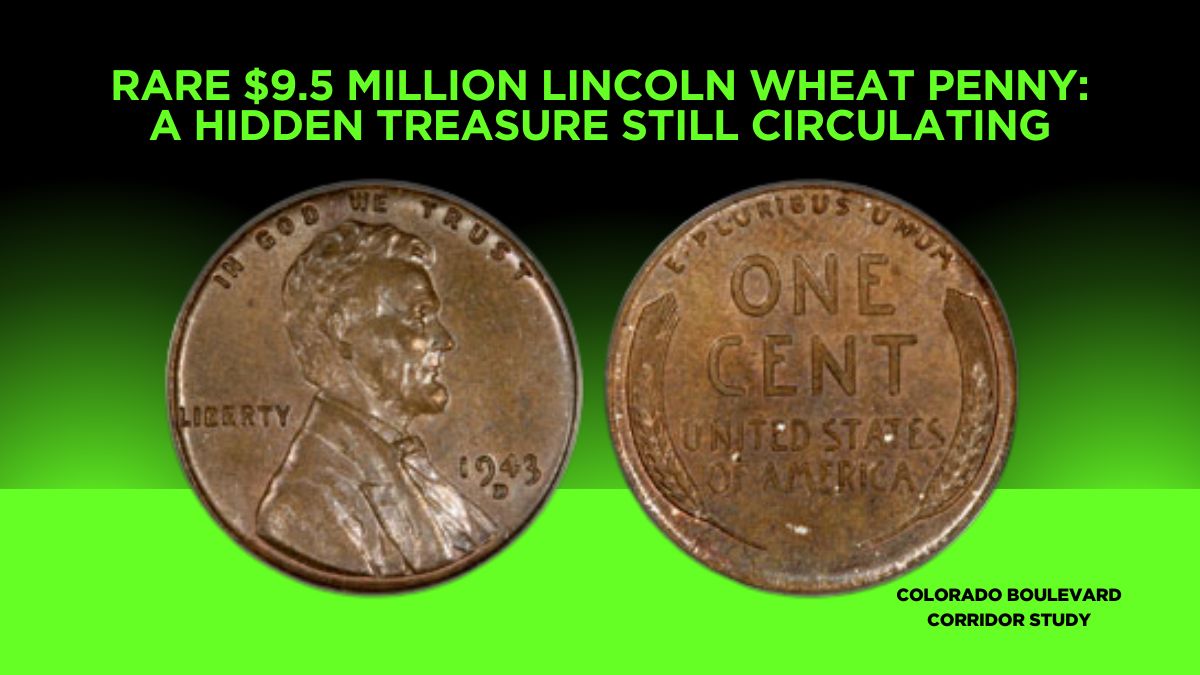The Lincoln Wheat Penny, minted from 1909 to 1958, is a cornerstone of American coinage. While most of these pennies are common, certain rare variations have fetched astonishing prices at auctions, with some reports suggesting values up to $9.5 million.
This article delves into these hidden treasures, their unique features, and how you might identify one in your collection.
The Genesis of the Lincoln Wheat Penny
Introduced in 1909 to commemorate the centennial of Abraham Lincoln’s birth, the Lincoln Wheat Penny was the first U.S. coin to feature a president’s likeness.
Designed by Victor David Brenner, the obverse showcases Lincoln’s profile, while the reverse displays two wheat stalks encasing the denomination and “United States of America.”
Why Some Pennies Are Worth Millions
Several factors contribute to the extraordinary value of certain Lincoln Wheat Pennies:
- Minting Errors: Mistakes during production, such as striking on incorrect planchets or die errors, resulted in unique coins.
- Low Mintage: Coins produced in limited quantities are inherently rarer.
- Historical Significance: Coins from notable periods or events often carry added value.
Notable High-Value Lincoln Wheat Pennies
Here’s a table summarizing some of the most valuable Lincoln Wheat Pennies:
| Year | Mint Mark | Unique Feature | Estimated Value | Quantity Known |
|---|---|---|---|---|
| 1943 | D | Struck in bronze instead of steel | Up to $2.3 million | 1 |
| 1944 | D | Struck in steel instead of bronze | Up to $500,000 | ~30 |
| 1958 | None | Doubled die obverse | Up to $336,000 | 3 |
| 1943 | S | Struck in bronze at San Francisco Mint | Up to $282,000 | 5 |
| 1909 | S VDB | Designer’s initials on reverse | Up to $168,000 | 484,000 minted |
Note: Values are approximate and can vary based on coin condition and market demand.
Spotlight on the 1943-D Bronze Penny
One of the most coveted coins is the 1943-D Bronze Penny. During World War II, copper was reserved for military purposes, leading the U.S. Mint to produce pennies from zinc-coated steel in 1943.
However, a few bronze planchets from 1942 were mistakenly used, resulting in extremely rare 1943 bronze pennies. The Denver-minted (D) version is particularly scarce, with only one confirmed example, which has fetched up to $2.3 million at auction.
Identifying a Rare Lincoln Wheat Penny
To determine if you possess a valuable Lincoln Wheat Penny, consider the following steps:
- Examine the Date and Mint Mark: Key dates include 1909-S VDB, 1914-D, 1922 (no D), 1943 (bronze), and 1955 (doubled die). The mint mark is located below the date:
- No Mark: Philadelphia Mint
- D: Denver Mint
- S: San Francisco Mint
- Inspect for Errors: Look for anomalies such as doubled die features, off-center strikes, or unusual colors.
- Conduct a Magnet Test: Steel pennies (1943) are magnetic, while bronze/copper pennies are not. If a 1943 penny doesn’t stick to a magnet, it might be a rare bronze version.
- Weigh the Coin: A standard bronze penny weighs about 3.11 grams, whereas a steel penny weighs approximately 2.7 grams.
- Assess the Condition: Coins in better condition (minimal wear, clear details) are typically more valuable.
Preserving and Verifying Your Coin
If you believe you’ve found a rare penny:
- Avoid Cleaning: Cleaning can reduce a coin’s value.
- Store Properly: Use protective holders to prevent damage.
- Seek Professional Authentication: Contact reputable coin grading services like the Professional Coin Grading Service (PCGS) or the Numismatic Guaranty Corporation (NGC) for verification and grading.
Where to Sell a Rare Penny
Once authenticated, consider selling your coin through:
- Coin Auctions: Platforms like Heritage Auctions or Stack’s Bowers specialize in rare coins.
- Numismatic Dealers: Certified coin dealers can provide appraisals and offers.
- Online Marketplaces: Websites such as eBay connect you with a broad audience of collectors.
The allure of discovering a rare Lincoln Wheat Penny lies in the possibility that a simple coin in your possession could be worth a fortune. By familiarizing yourself with the key characteristics of these valuable pennies and taking the proper steps to authenticate and preserve them, you might just unearth a hidden treasure.
FAQs
What makes a Lincoln Wheat Penny valuable?
Factors include minting errors, low mintage numbers, historical significance, and the coin’s condition.
How can I tell if my 1943 penny is bronze or steel?
Perform a magnet test: steel pennies are magnetic; bronze pennies are not. Additionally, bronze pennies weigh more (3.11 grams) than steel ones (2.7 grams).
Are all 1909-S VDB pennies valuable?
While all 1909-S VDB pennies are considered valuable due to their low mintage, their exact worth depends on their condition and market demand.

